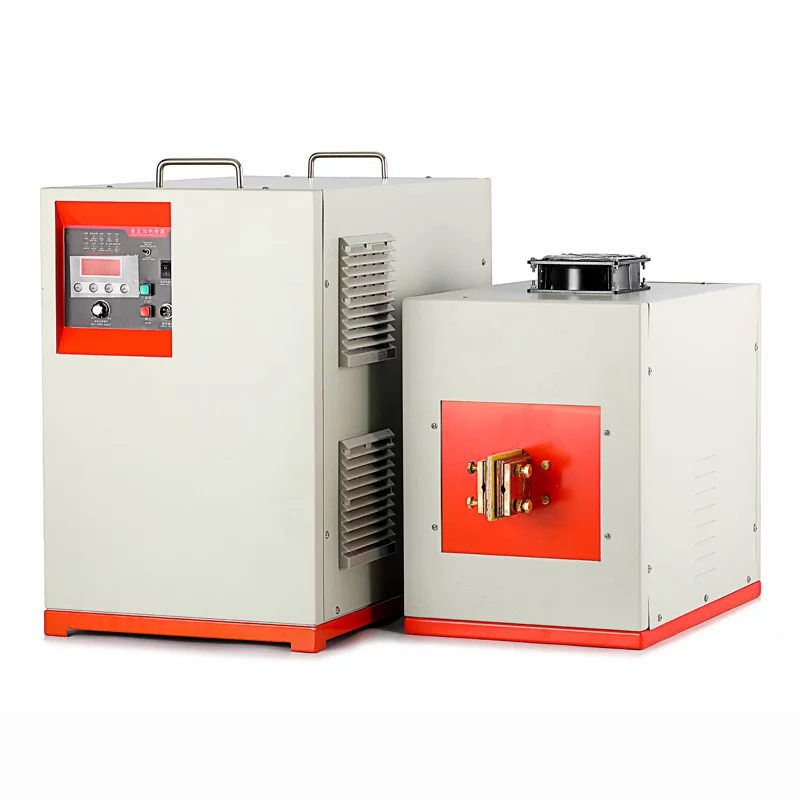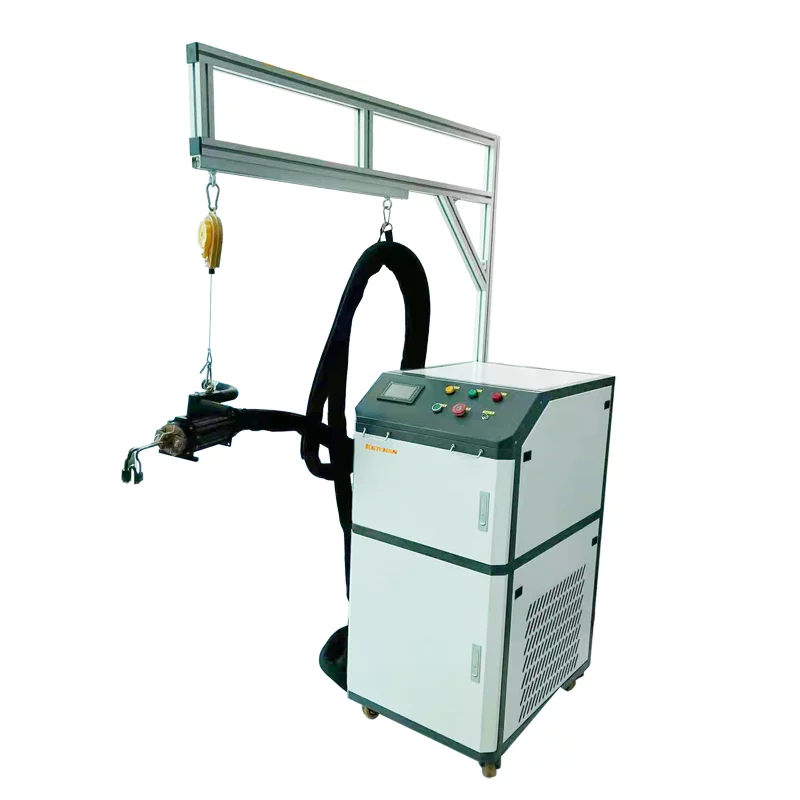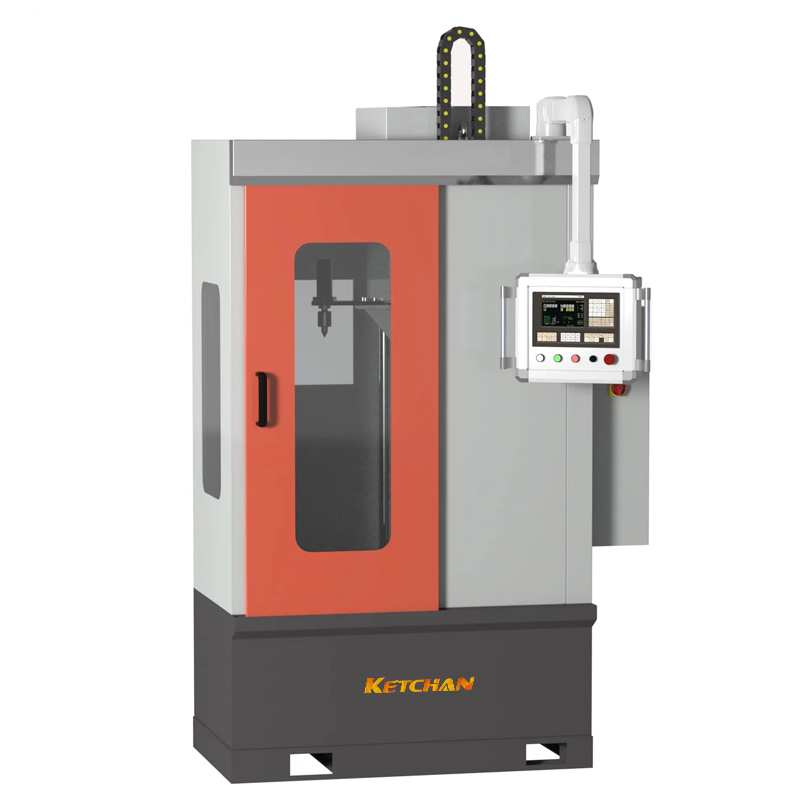There are ten common quenching methods in the heat treatment process, which are single medium (water, oil, air). Double medium quenching; Martensite graded quenching; Martensite fractional quenching below Ms point; Bainite isothermal quenching; Compound quenching method; Precooling isothermal quenching method; Delayed cooling and quenching method; Quenching and self-returning fire; Jet quenching, etc.
1.Single medium (water, oil, air) quenching
Quenching a single medium (water, oil, air): To quench a workpiece that has been heated to a quenching temperature into a quenching medium, allowing it to cool completely. This is the simplest quenching method and is commonly used for carbon steel and alloy steel workpieces with simple shapes. The quenching medium is selected according to the heat transfer coefficient, hardenability, size, and shape of the parts.
2.Double medium quenching
Double-medium quenching: The workpiece heated to the quenching temperature is cooled to near the Ms point in the quenching medium with strong cooling capacity, and then transferred to the slow-cooling quenching medium to room temperature, so as to reach different quenching cooling temperature ranges and have a relatively ideal quenching cooling rate. This method is also used in carbon tool steels for large workpieces with complex shapes, high carbon steel, and alloy steel. Common cooling media include water-oil, water-niter, water-air, and oil-air. Water is generally used as the fast cold quenching medium, oil, or air as the slow cold quenching medium, and the air is rarely used.
3.Graded martensite quenching
Martensite grading quenching: the steel is austenitized and then immersed in the liquid medium (salt bath or alkali bath) at the upper Martensite point of steel with a slightly higher or lower temperature. It is maintained for an appropriate time. After the inner and outer parts of the steel reach the medium temperature, it is taken out for air cooling and the supercooled austenite is slowly converted into Martensite. It is generally used for small workpieces with complex shapes and strict deformation requirements. This quenching method is also commonly used for high-speed steel and high alloy steel die.
4. Martensite fractional quenching below Ms point
Martensite graded quenching method below Ms point: when the bath temperature is lower than Ms of the workpiece steel and higher than Mf, the workpiece is cooled faster in the bath, and the same result can be obtained with graded quenching when the size is larger. It is usually used for large size steel workpieces with low hardenability.
5. Bainite isothermal quenching
Bainite isothermal quenching: the workpiece is quenched into the bath at the lower bainite temperature of the steel to make it undergo the lower bainite transformation, which is generally kept in the bath for 30~60min.Numerical control WeChat cncdar bainite isothermal quenching process main three steps: austenitizing treatment; Cooling treatment after austenitizing; Bainite isothermal treatment; Commonly used in alloy steel, high carbon steel small size parts and ductile cast iron.
6. Compound quenching method
Compound quenching method: the workpiece is quenched below Ms to obtain the martensite with a volume fraction of 10%~30%, and then isothermal in the lower bainite area to obtain the martensite and bainite structure of the larger section workpiece, which is often used for alloy tool steel workpiece.
7. Pre-cooling isothermal quenching method
Precooling isothermal quenching method: also known as temperature-rising isothermal quenching, the parts are cooled in a bath with a lower temperature (greater than Ms) and then transferred to a bath with a higher temperature to make the austenite isothermal transformation. Suitable for steel parts with poor hardenability or larger size parts that must be isothermal quenching.
8.Delay cooling and quenching method
Delayed cooling quenching method: the parts are precooled in air, hot water, and salt bath to a temperature slightly higher than Ar3 or Ar1, and then quenched in a single medium. It is often used for parts with complex shapes and different thicknesses and small deformation.
9.Quenching and self-returning fire method
Quenching self-return fire method: all the processed workpiece will be heated, but only the part that needs to be hardened (usually the working part) will be immersed in quenching liquid to cool, and the CNC WeChat cncdar will be kept until the moment when part of the flame color disappears, and then the quenching process cooled in the air will be taken out immediately. Quenching and self-tempering process use the heat from the core not fully cooled to the surface to temper the surface. Tools used to withstand impact such as chisels, punches, hammers, etc.
10. Jet quenching method
Jet quenching: The quenching process by which water is sprayed onto the workpiece. The water flow may be large or small, depending on the required quenching depth. Spray quenching does not form a vapor film on the surface of the workpiece, thus ensuring a deeper hardening layer than in the previous water quenching. Mainly used for local surface quenching.





